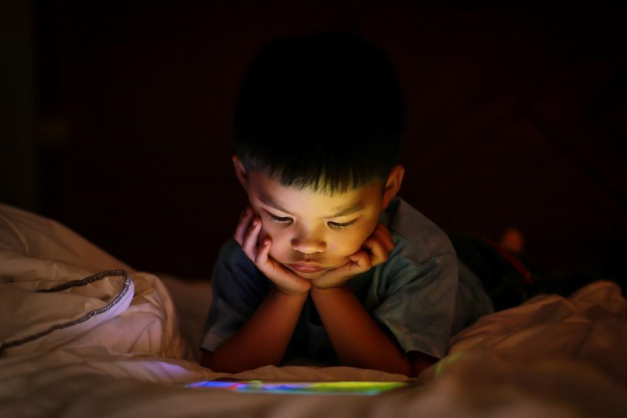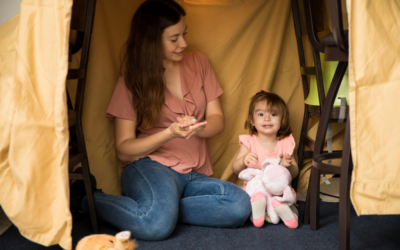Follow American Academy of Pediatrics (AAP) guidelines to create a responsible media plan for your family
Media is everywhere we turn these days. From cable and Netflix to YouTube and video games, we are presented with a steady stream of content trying to grab our attention. While screen time can be a welcome distraction in our busy lives, it can also compete with more important things. It’s imperative to recognize the potential impact this can have on the rapidly developing brains of young children. Impacts include:
- Delayed motor skills
- Impaired social/emotional development
- Decreased attention span
- Reduced ability to self-soothe and self-regulate
- Increased aggression
As parents, we’re often eager to share our favorite characters, shows, and activities with our children; reliving childhood through the joyful perspective of your child is one of the highlights of parenting. However, the American Academy of Pediatrics has some recommendations on screen time based on their knowledge of early childhood development. Give your child the best possible start on life by following professional guidance regarding media exposure.
Know your limits
The AAP is comprised of the largest group of pediatricians in the nation, all committed to providing scientifically backed information to support the health and well-being of children. They’ve written and revised the recommended guidelines for media exposure to account for its prominence in our culture and lives.
According to Jenny Radesky, a doctor, a fellow with the AAP, and the lead author of the “Media and Young Minds” policy statement, “Families should proactively think about their children’s media use and talk with children about it, because too much media use can mean that children don’t have enough time during the day to play, study, talk, or sleep.”
Consider the following recommendations by age to foster a healthy relationship between your child and digital devices:
- Infant to 18 months: Babies younger than 18 months old should not have any screen time other than occasional video chatting with long-distance loved ones. Parents should prioritize togetherness and creative playtime that is not interrupted or influenced by media or digital devices.
- 18 to 24 months: If parents choose to introduce media, they should focus on high-quality programming with educational value, such as the content offered by Sesame Workshop and PBS. It’s important to make screen time an interactive experience by watching shows with your child and discussing the lessons being taught. Think of it like storytime with someone else reading the story.
- Ages 2 to 5 years: Screen time should be limited to one hour of high-quality programming each day. Maximize the educational value of the shows being watched by viewing them with your child and pointing out emotions the characters are experiencing or lessons being taught that may not be as obvious to a young child. Use screen time as a springboard for conversations or learning.
Other recommendations for responsible media use involve designating media-free times and zones, such as no television during meals or in bedrooms. It’s also wise to ban screen time an hour before bedtime as not to disrupt sleep cycles.
Some programming can lead to chances for conversations or learning that may not have occurred organically in the real world, and identifying those instances and acting on them can contribute to your child’s social and emotional development.
When used properly, digital media can supplement educational and creative processes. As with many other aspects of life, optimal use is about finding the right balance. Make an effort as a family to use screen time thoughtfully by following your parental instincts along with recommended guidelines.
The Virginia Infant & Toddler Specialist Network helps improve the quality of care for infants and toddlers through extensive resources, services, and education for caregivers. Learn more about how we can help you improve the standard of care.




